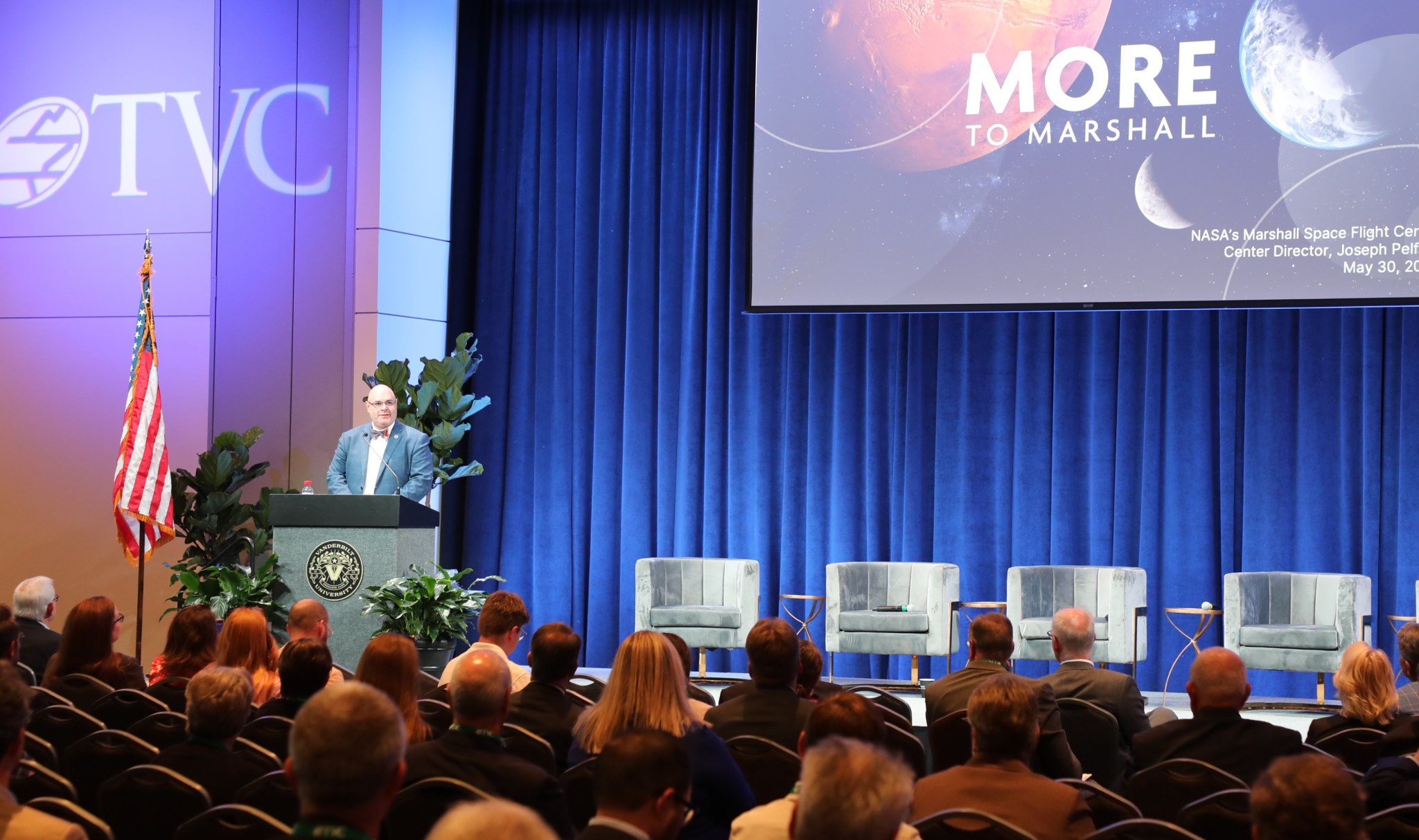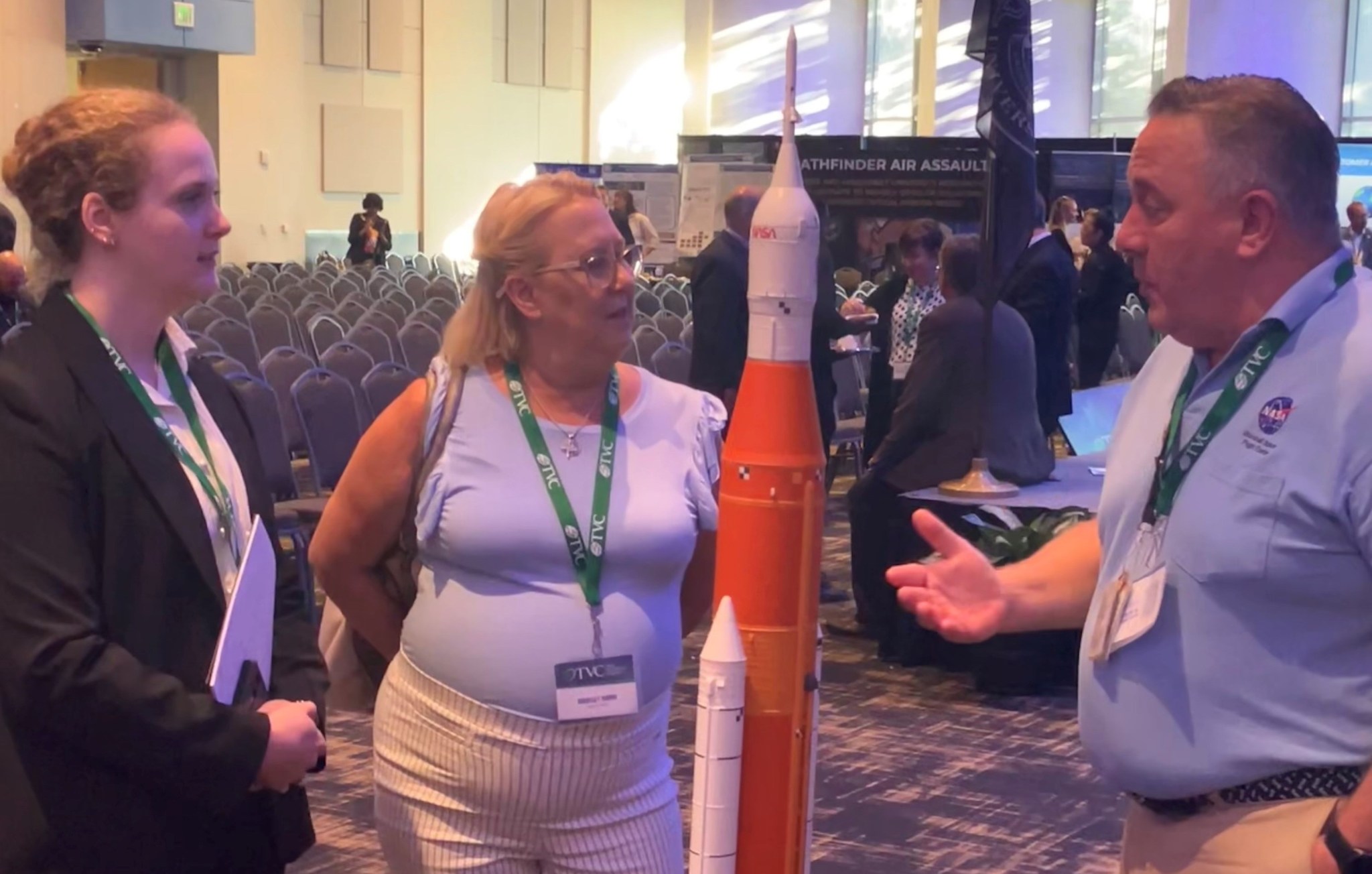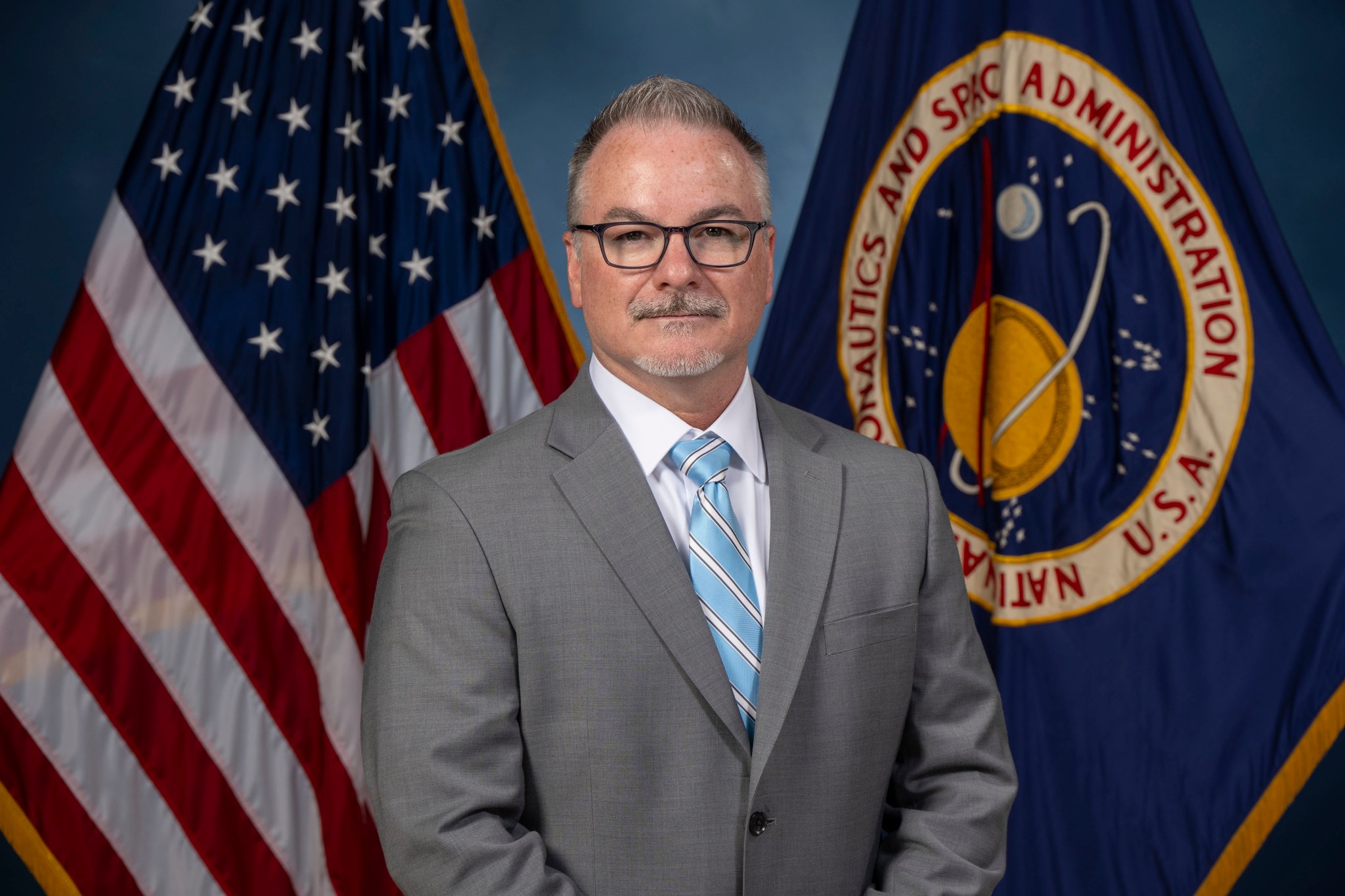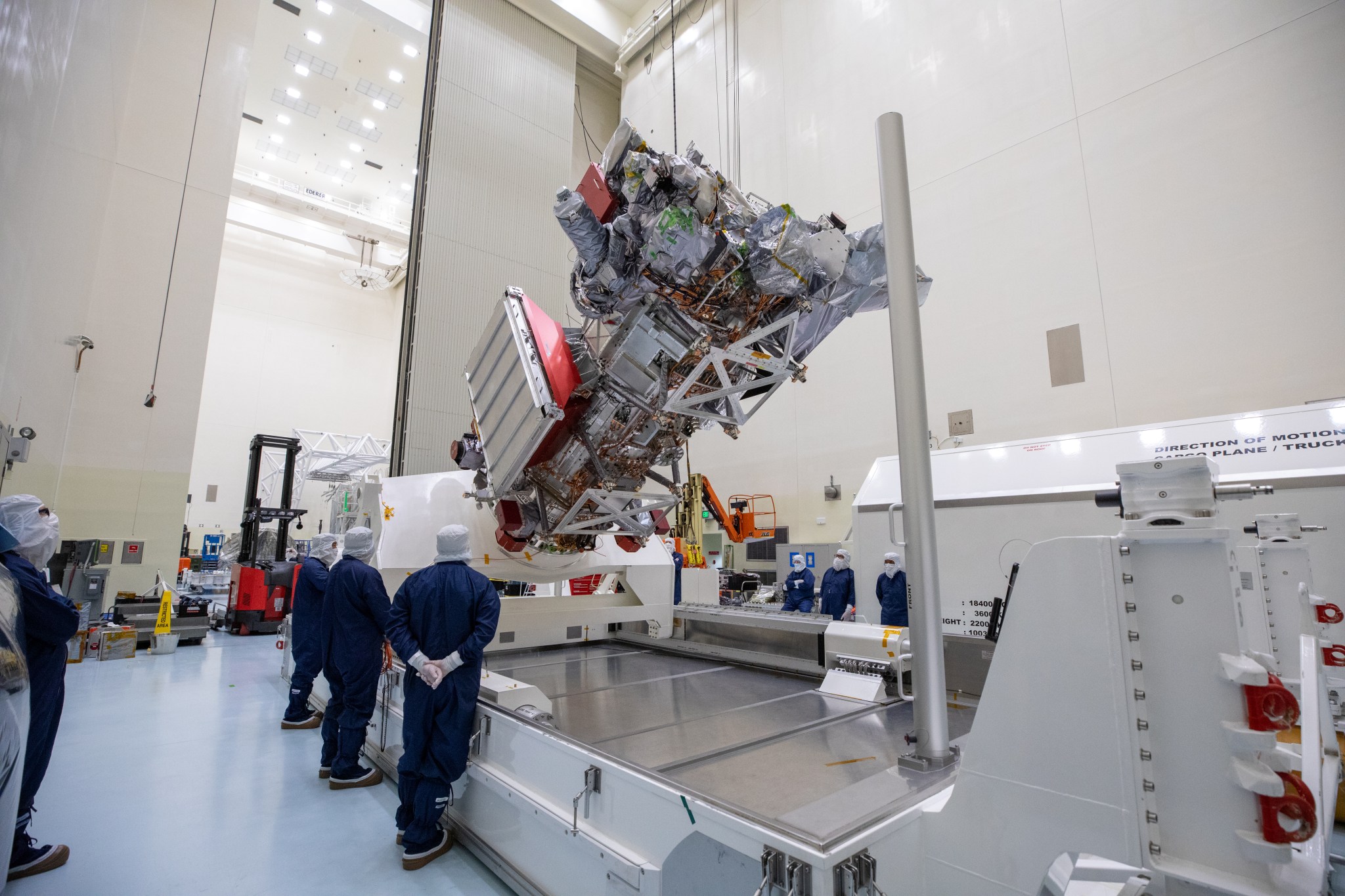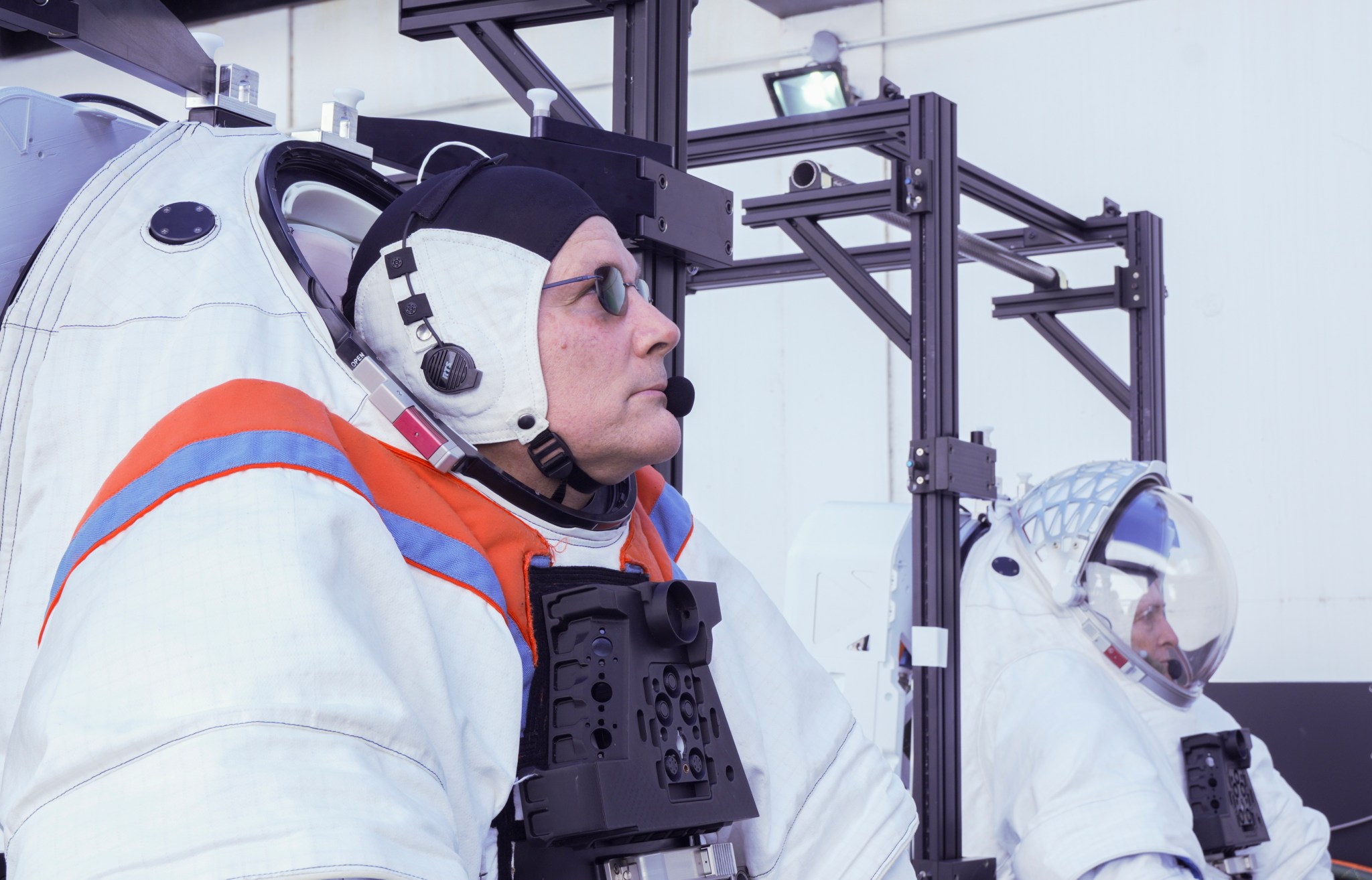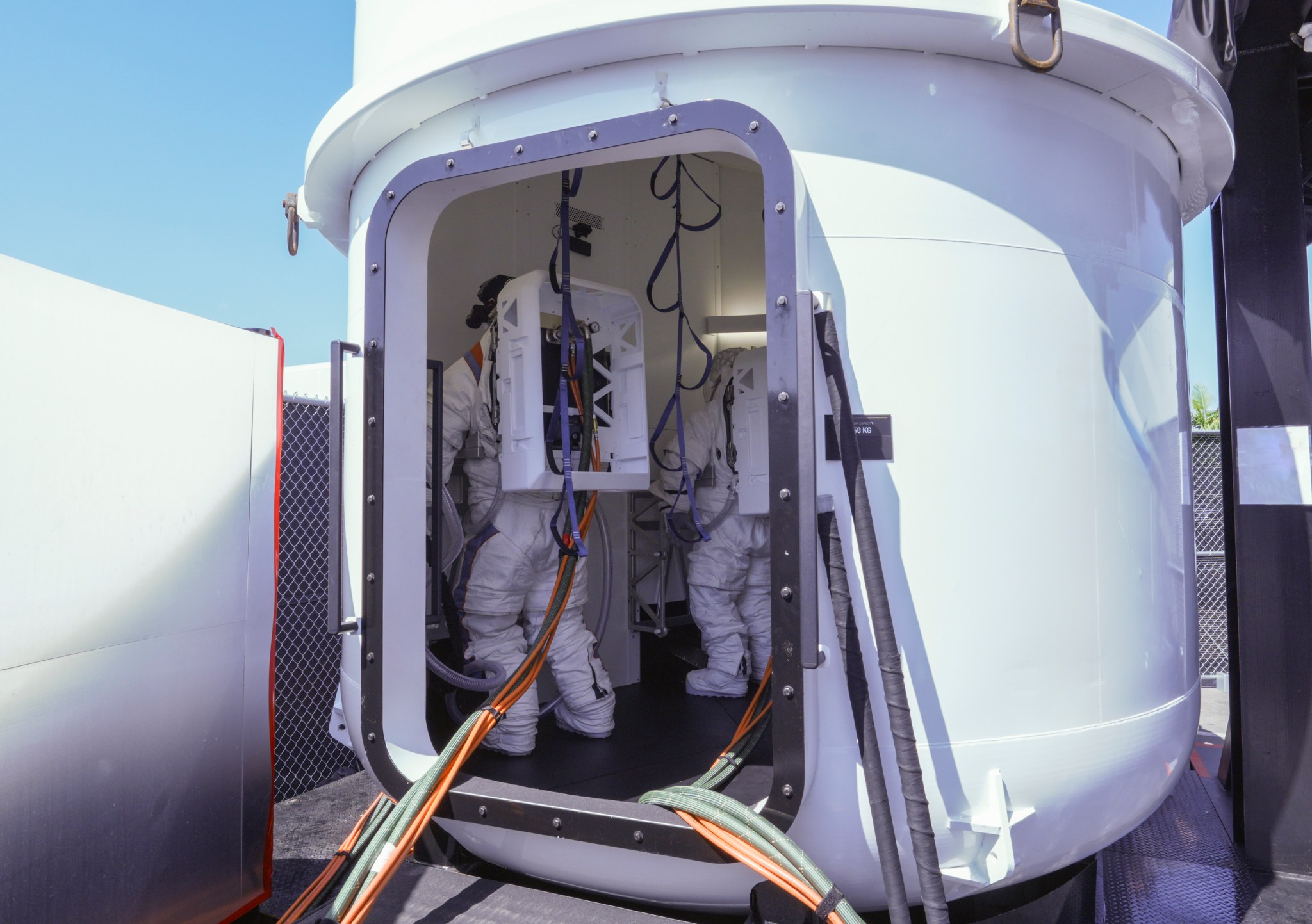The Marshall Star for June 5, 2024
LIFTOFF! NASA Astronauts Pilot First Starliner Crewed Test to Station NASA astronauts Butch Wilmore and Suni Williams are safely in orbit on the first crewed flight test aboard Boeing’s Starliner spacecraft bound for the International Space Station. As part of NASA’s Boeing Crew Flight Test, the astronauts lifted off at 9:52 a.m. CDT June 5 […]
The Marshall Star for June 5, 2024
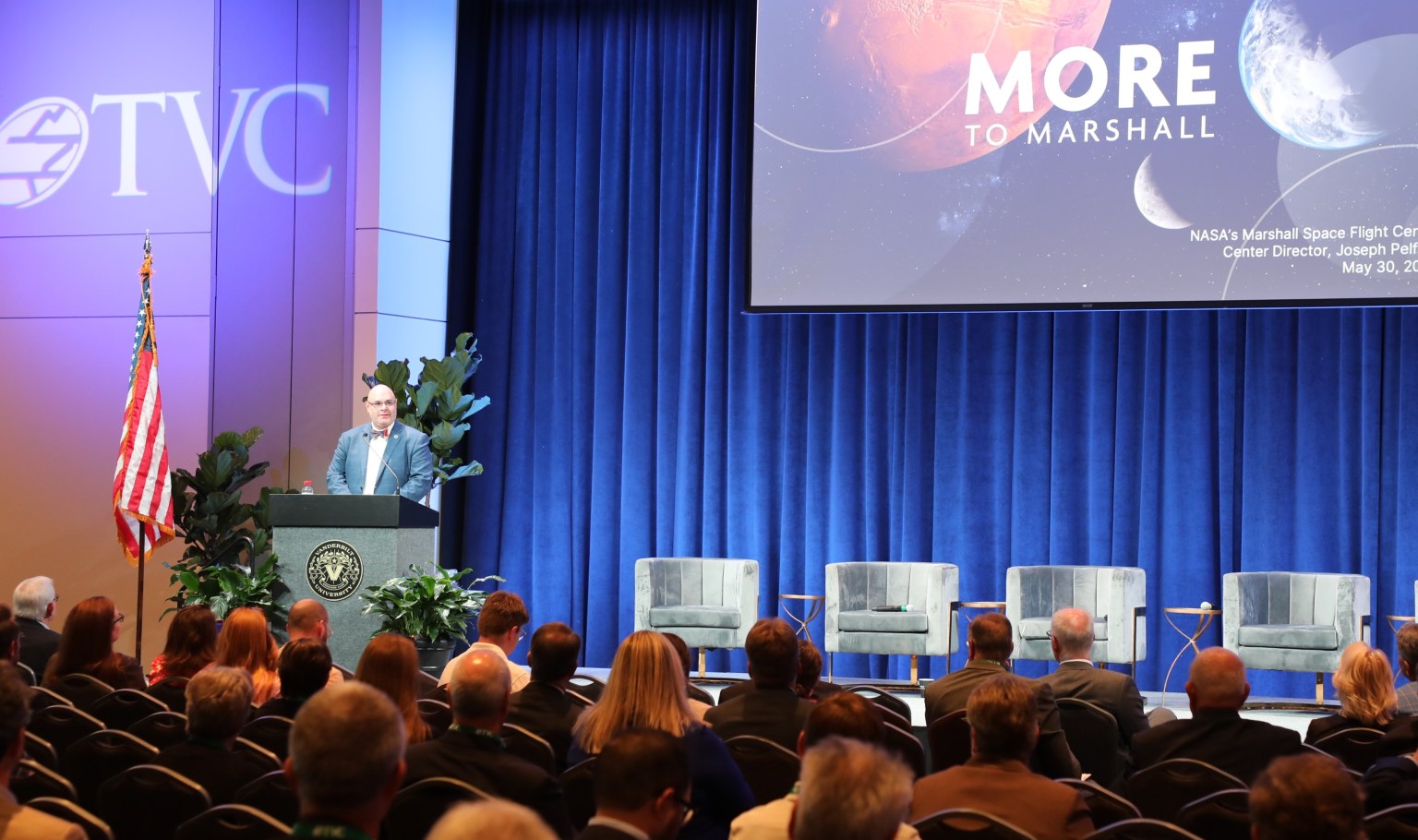
LIFTOFF! NASA Astronauts Pilot First Starliner Crewed Test to Station
NASA astronauts Butch Wilmore and Suni Williams are safely in orbit on the first crewed flight test aboard Boeing’s Starliner spacecraft bound for the International Space Station.
As part of NASA’s Boeing Crew Flight Test, the astronauts lifted off at 9:52 a.m. CDT June 5 on a ULA (United Launch Alliance) Atlas V rocket from Space Launch Complex-41 at Cape Canaveral Space Force Station on an end-to-end test of the Starliner system.

“Two bold NASA astronauts are well on their way on this historic first test flight of a brand-new spacecraft,” said NASA Administrator Bill Nelson. “Boeing’s Starliner marks a new chapter of American exploration. Human spaceflight is a daring task – but that’s why it’s worth doing. It’s an exciting time for NASA, our commercial partners, and the future of exploration. Go Starliner, Go Butch and Suni!”
As part of NASA’s Commercial Crew Program, the flight test will help validate the transportation system, launch pad, rocket, spacecraft, in-orbit operations capabilities, and return to Earth with astronauts aboard as the agency prepares to certify Starliner for rotational missions to the space station. Starliner previously flew two uncrewed orbital flights, including a test to and from the space station, along with a pad abort demonstration.
“With Starliner’s launch, separation from the rocket, and arrival on orbit, Boeing’s Crew Flight Test is right on track,” said Mark Nappi, vice president and program manager of Boeing’s Commercial Crew Program. “Everyone is focused on giving Suni and Butch a safe, comfortable, ride and performing a successful test mission from start to finish.”
During Starliner’s flight, Boeing will monitor a series of automatic spacecraft maneuvers from its mission control center in Houston. NASA teams will monitor space station operations throughout the flight from the Mission Control Center at the agency’s Johnson Space Center.
“Flying crew on Starliner represents over a decade of work by the Commercial Crew Program and our partners at Boeing and ULA,” said Steve Stich, manager, Commercial Crew Program, at NASA’s Johnson Space Center. “For many of us, this is a career-defining moment bringing on a new crew transportation capability for our agency and our nation. We are going to take it one step at a time, putting Starliner through its paces, and remaining vigilant until Butch and Suni safely touch down back on Earth at the conclusion of this test flight.”
Starliner will autonomously dock to the forward-facing port of the station’s Harmony module at approximately 11:15 a.m. June 6, and remain at the orbital laboratory for about a week.
Wilmore and Williams will help verify the spacecraft is performing as intended by testing the environmental control system, the displays and control system, and by maneuvering the thrusters, among other tests during flight.
After a safe arrival at the space station, Wilmore and Williams will join the Expedition 71 crew of NASA astronauts Michael Barratt, Matt Dominick, Tracy C. Dyson, and Jeanette Epps, and Roscosmos cosmonauts Nikolai Chub, Alexander Grebenkin, and Oleg Kononenko.
Mission coverage will continue on NASA Television channels throughout Starliner’s flight and resume on NASA+ prior to docking.
Follow mission updates here.
The Huntsville Operations Support Center (HOSC) at NASA’s Marshall Space Flight Center provides engineering and mission operations support for the space station, the Commercial Crew Program, and Artemis missions, as well as science and technology demonstration missions. The Payload Operations Integration Center within HOSC operates, plans, and coordinates the science experiments onboard the space station 365 days a year, 24 hours a day. The Commercial Crew Program support team at Marshall provides crucial programmatic, engineering, and safety and mission assurance expertise for launch vehicles, spacecraft propulsion, and integrated vehicle performance.
A flag-raising ceremony was held May 2 outside the HOSC for Marshall’s support of the mission. The ceremony was a joint effort between the Payload and Mission Operations Division and Commercial Crew Program team.
Center Director Joseph Pelfrey Outlines Marshall’s Future at 29th Tennessee Valley Corridor Summit
By Rick Smith
Joseph Pelfrey, director of NASA’s Marshall Space Flight Center, was a key presenter at the 29th annual Tennessee Valley Corridor National Summit, hosted by Vanderbilt University in Nashville on May 29 and 30.
The event drew some 300 attendees, including government representatives, members of the public, and industry and academic stakeholders from across the corridor’s five-state region, which includes Alabama, Kentucky, North Carolina, Tennessee, and Virginia.
Pelfrey addressed summit attendees May 30 as part of a session on “Exploring and Discovering Through Science, Research, and Space.” He noted that Marshall will embrace a transformative shift, including a transition toward small- and medium-sized programs enabled by strategic partnerships, helping NASA prepare for a future in which astronauts live and work on the Moon and prepare for crewed missions to Mars.
That paradigm shift will rely heavily on “the talent, innovation, and infrastructure available in the Tennessee Valley, (enabling) us to accelerate progress in space exploration, scientific research, and technology development,” Pelfrey added.
He also emphasized that there is much more to come for Marshall, with the center continuing to serve as a trusted technical solutions provider for NASA and its partners. Pelfrey highlighted how harnessing the center’s deep technical expertise for future missions will help drive innovation, reduce costs, and accelerate shared goals for advanced space exploration.
Pelfrey offered a detailed look at NASA’s successful Artemis I launch in 2022 and the upcoming Artemis II mission, which will send the first woman and first person of color to deep space to conduct a lunar fly-by – the final checkout before Artemis III lands Americans on the lunar surface for the first time since 1972. Pelfrey also discussed Marshall’s role in managing NASA’s SLS (Space Launch System) rocket, the backbone of the agency’s Artemis-era endeavors, and identified new and upcoming programs and efforts geared to expand the center’s role in deep-space science and exploration.
He noted that much of that work has had a direct effect on the state of Tennessee and on industry and academia across the corridor.
In fiscal year 2021 alone, NASA’s economic impact supported more than 1,600 jobs and generated more than $340 million in Tennessee alone, including $119 million in labor income. More broadly, since 2015, NASA has enacted 97 Cooperative Agreements with partners across the five-state corridor. Eighty-two of those were with universities, including six minority-serving institutions. Of the 15 industry agreements, 11 created partnerships with small businesses.
“This is truly an exciting time to live and work in the Tennessee Valley,” Pelfrey said, “and to be part of the space community.”
Other summit speakers included Senators Marsha Blackburn and Bill Hagerty of Tennessee, Rep. Chuck Fleischmann of Tennessee’s 3rd district, and Rep. Mark Green of Tennessee’s 7th district; Corey Hinderstein, deputy administrator of the National Nuclear Security Administration; Dr. Steven Streiffer, director of Oak Ridge National Laboratory; and Dr. Robert Lindquist, vice president for research and economic development at the University of Alabama in Huntsville.
Panels and seminars included discussion of American security, global economic leadership, new energy solutions, workforce development, and the emergence of AI technology. More than 20 businesses and academic institutions – including representatives from SLS, the Human Landing Systems Program Office, the Space Nuclear Propulsion Project Office, and other Marshall organizations – engaged with summit participants and promoted current and future NASA endeavors at a trade-show expo in the Vanderbilt Student Life Center.
The Tennessee Valley Corridor was founded in 1995 to foster collaboration between government, academia, and industry, to champion regional economic leadership, and to promote partnerships in national security, science, space, transportation, environment, energy, education, and workforce development. Its 2023 national summit was held in Huntsville.
Smith, an Aeyon/MTS employee, supports the Marshall Office of Communications.
Davey Jones Named Marshall’s Center Strategy Lead
Davey Jones has been named center strategy lead at NASA’s Marshall Space Flight Center, following the reassignment of Jeramie Broadway, effective June 2.
As center strategy lead for the Office of the Center Director, Jones will lead and implement the director’s strategic vision, leveraging and integrating Marshall’s strategic business units, in coordination and collaboration with all center organizations, and to ensure alignment with the agency’s strategic priorities.
He moves into his new role after being the manager of the Program Planning & Control Office within the HLS (Human Landing Systems) Program at Marshall since 2020. In that capacity, Jones’ primary role was managing the program’s budget, schedule, risk, and other programmatic functions. He has worked in multiple roles throughout his career, focused on the formulation of key programs and projects for Marshall, including development of technology upgrades for life support systems on the International Space Station, formulation of the SLS (Space Launch System) Block 1B vehicle and exploration upper stage, and leading various human exploration architecture studies for the Moon and Mars.
From 2017 to 2020, he was the Environmental Control and Life Support System Integration and Development manager for the International Space Station Projects Office in the Human Exploration Development and Operations Office. Jones was senior technical assistant to Marshall’s associate director, technical, from 2016-2017. Prior to that, he was SLS stages alternate lead systems engineer from 2014-2016. A U.S. Navy veteran, he began his NASA career in 2008 in the Advanced Concepts Office.
Jones’ honors include a NASA Early Career Achievement Medal, Marshall Engineering Director’s Award, and a Human Exploration Framework Team Group Achievement Award.
A native of Lakeland, Florida, he earned a bachelor’s degree in mechanical engineering from the University of Alabama in Huntsville.
Lucy Images Reveal Asteroid Dinkinesh to be Surprisingly Complex
Images from the November 2023 flyby of asteroid Dinkinesh by NASA’s Lucy spacecraft show a trough on Dinkinesh where a large piece – about a quarter of the asteroid – suddenly shifted, a ridge, and a separate contact binary satellite (now known as Selam). Scientists say this complicated structure shows that Dinkinesh and Selam have significant internal strength and a complex, dynamic history.
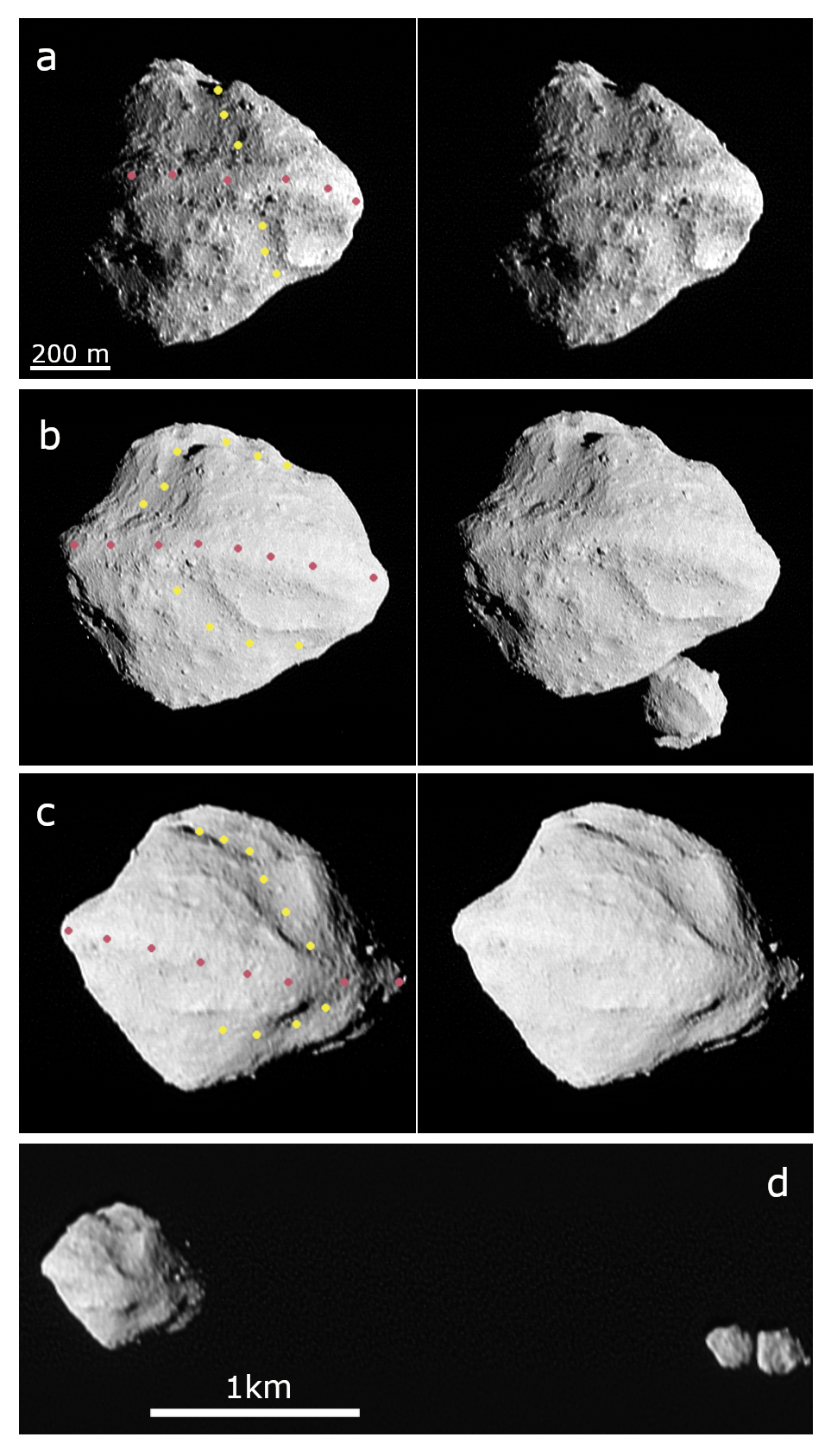
“We want to understand the strengths of small bodies in our solar system because that’s critical for understanding how planets like Earth got here,” said Hal Levison, Lucy principal investigator at the Boulder, Colorado, branch of the Southwest Research Institute in San Antonio, Texas. “Basically, the planets formed when zillions of smaller objects orbiting the Sun, like asteroids, ran into each other. How objects behave when they hit each other, whether they break apart or stick together, has a lot to do with their strength and internal structure.” Levison is lead author of a paper on these observations published May 29 in Nature.
Researchers think that Dinkinesh is revealing its internal structure by how it has responded to stress. Over millions of years rotating in the sunlight, the tiny forces coming from the thermal radiation emitted from the asteroid’s warm surface generated a small torque that caused Dinkinesh to gradually rotate faster, building up centrifugal stresses until part of the asteroid shifted into a more elongated shape. This event likely caused debris to enter into a close orbit, which became the raw material that produced the ridge and satellite.
If Dinkinesh were much weaker, more like a fluid pile of sand, its particles would have gradually moved toward the equator and flown off into orbit as it spun faster. However, the images suggest that it was able to hold together longer, more like a rock, with more strength than a fluid, eventually giving way under stress and fragmenting into large pieces. (Although the amount of strength needed to fragment a small asteroid like Dinkinesh is miniscule compared to most rocks on Earth.)
“The trough suggests an abrupt failure, more an earthquake with a gradual buildup of stress and then a sudden release, instead of a slow process like a sand dune forming,” said Keith Noll of NASA’s Goddard Space Flight Center, project scientist for Lucy and a co-author of the paper.
“These features tell us that Dinkinesh has some strength, and they let us do a little historical reconstruction to see how this asteroid evolved,” Levison said. “It broke, things moved apart and formed a disk of material during that failure, some of which rained back onto the surface to make the ridge.”
The researchers think some of the material in the disk formed the moon Selam, which is actually two objects touching each other, a configuration called a contact binary. Details of how this unusual moon formed remain mysterious.
Dinkinesh and its satellite are the first two of 11 asteroids that Lucy’s team plans to explore over its 12-year journey. After skimming the inner edge of the main asteroid belt, Lucy is now heading back toward Earth for a gravity assist in December 2024. That close flyby will propel the spacecraft back through the main asteroid belt, where it will observe asteroid Donaldjohanson in 2025, and then on to the first of the encounters with the Trojan asteroids that lead and trail Jupiter in its orbit of the Sun beginning in 2027.
Lucy’s principal investigator is based out of the Boulder, Colorado, branch of Southwest Research Institute, headquartered in San Antonio. NASA’s Goddard Space Flight Center provides overall mission management, systems engineering, and safety and mission assurance. Lockheed Martin Space in Littleton, Colorado, built and operates the spacecraft. Lucy is the 13th mission in NASA’s Discovery Program. NASA’s Marshall Space Flight Center manages the Discovery Program for the Science Mission Directorate at NASA Headquarters.
NASA’s Europa Clipper Unpacks in Florida
Crews rotated to vertical then lifted NASA’s Europa Clipper spacecraft from its protective shipping container after it arrived at the Payload Hazardous Servicing Facility at the agency’s Kennedy Space Center on May 28.
The spacecraft, which will collect data to help scientists determine if Jupiter’s icy moon Europa could support life, arrived in a United States Air Force C-17 Globemaster III cargo plane at Kennedy’s Launch and Landing Facility on May 23. The hardware traveled more than 2,500 miles from NASA’s Jet Propulsion Lab in Southern California where it was assembled. The team transported Europa Clipper to the facility and will perform a number of activities to prepare it for launch, including attaching the high gain antenna, affixing solar arrays to power the spacecraft, and loading propellants that will help guide the spacecraft to its destination.
On board are nine science instruments to gather detailed measurements while Europa Clipper performs approximately 50 close flybys of the Jovian moon. Research suggests an ocean twice the volume of all the Earth’s oceans exists under Europa’s icy crust.
The Europa Clipper spacecraft will launch on a SpaceX Falcon Heavy rocket from NASA Kennedy’s Launch Complex 39A. The launch period opens Oct. 10.
Managed by Caltech in Pasadena, California, JPL leads the development of the Europa Clipper mission in partnership with the Johns Hopkins Applied Physics Laboratory (APL) in Laurel, Maryland, for NASA’s Science Mission Directorate. APL designed the main spacecraft body in collaboration with JPL and NASA’s Goddard Space Flight Center. The Planetary Missions Program Office at NASA’s Marshall Space Flight Center executes program management of the Europa Clipper mission.
Travel Through Data from Space in New 3D Instagram Experiences
A new project provides special 3D “experiences” on Instagram using data from NASA’s Chandra X-ray Observatory and other telescopes through augmented reality (AR), allowing users to travel virtually through objects in space. These new experiences of astronomical objects – including the debris fields of exploded stars – are being released to help celebrate the 25th anniversary of operations from Chandra, NASA’s flagship X-ray telescope.
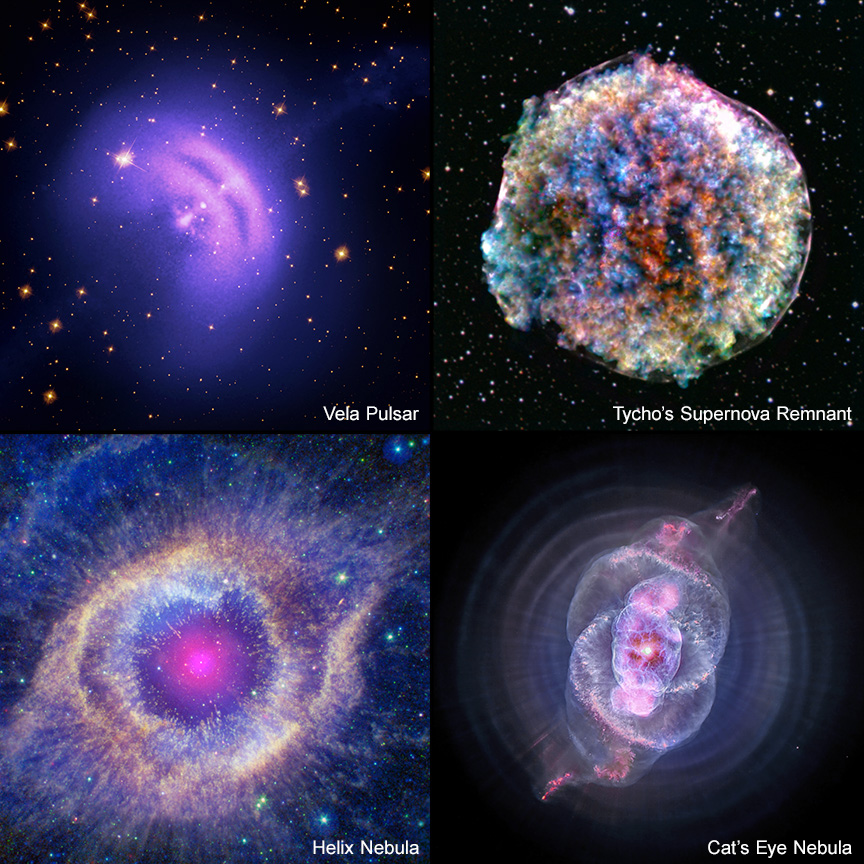
In recent years, Instagram experiences (previously referred to as filters) of NASA mission control, the International Space Station, and the Perseverance Rover on Mars have allowed participants to virtually explore what NASA does. This new set of Chandra Instagram filters joins this space-themed collection.
“We are excited to bring data from the universe down to earth in this way,” said Kimberly Arcand, visualization and emerging technology scientist at the Chandra X-ray Center. “By enabling people to access cosmic data on their phones and through AR, it brings Chandra’s amazing discoveries literally right to your fingertips.”
The new Instagram experiences are created from 3D models based on data collected by Chandra and other telescopes along with mathematical models. Traditionally, it has been very difficult to gather 3D data of objects in our galaxy due to their two-dimensional projection on the sky. New instruments and techniques, however, have helped allowed astronomers in recent years to construct more data-driven models of what these distant objects look like in three dimensions.
These advancements in astronomy have paralleled the explosion of opportunities in virtual, extended, and augmented reality. Such technologies provide virtual digital experiences, which now extend beyond Earth and into the cosmos. This new set of Chandra Instagram experiences was made possible by a collaboration including NASA, the Smithsonian Institution, and students and researchers at Brown University.
These Instagram experiences also include data sonifications of the celestial objects. Sonification is the process of translating data into sounds and notes so users can hear representations of the data, an accessibility project the Chandra team has led for the past four years.
“These Chandra Instagram experiences are another way to share these cosmic data with the public,” Arcand said. “We are hoping this helps reach new audiences, especially those who like to get their information through social media.”
The objects in the new Chandra Instagram experience collection include the Tycho supernova remnant, the Vela Pulsar, the Helix Nebula, the Cat’s Eye Nebula, and the Chandra spacecraft. The 3D models of the first three objects were done in conjunction with Sal Orlando, an astrophysicist at Italy’s National Institute for Astrophysics (INAF) in Palmero. The Cat’s Eye Nebula was created with data from Ryan Clairmont, physics researcher and undergraduate at Stanford University. Arcand worked with Brown’s Tom Sgouros and his team, research assistant Alexander Dupuis and undergraduate Healey Koch, on the Chandra Instagram filters.
The experiences include text that explains what users are looking at. The effects are free and available on Instagram on mobile devices for at least six months, and some will remain viewable in perpetuity on the Smithsonian’s Voyager 3D website.
“There is a lot of rich and beautiful data associated with these models that Healey and I looked to bring in, which we did by creating the textures on the models as well as programming visual effects for displaying them in AR,” Dupuis said.
NASA’s Marshall Space Flight Center manages the Chandra program. The Smithsonian Astrophysical Observatory’s Chandra X-ray Center controls science from Cambridge Massachusetts and flight operations from Burlington, Massachusetts. The Chandra X-ray Center is headquartered at the Smithsonian Astrophysical Observatory, which is part of the Center for Astrophysics | Harvard & Smithsonian.
Read more from NASA’s Chandra X-ray Observatory.
Agency to Measure Moonquakes with Help from InSight Mars Mission
The most sensitive instrument ever built to measure quakes and meteor strikes on other worlds is getting closer to its journey to the mysterious far side of the Moon. It’s one of two seismometers adapted for the lunar surface from instruments originally designed for NASA’s InSight Mars lander, which recorded more than 1,300 marsquakes before the mission’s conclusion in 2022.
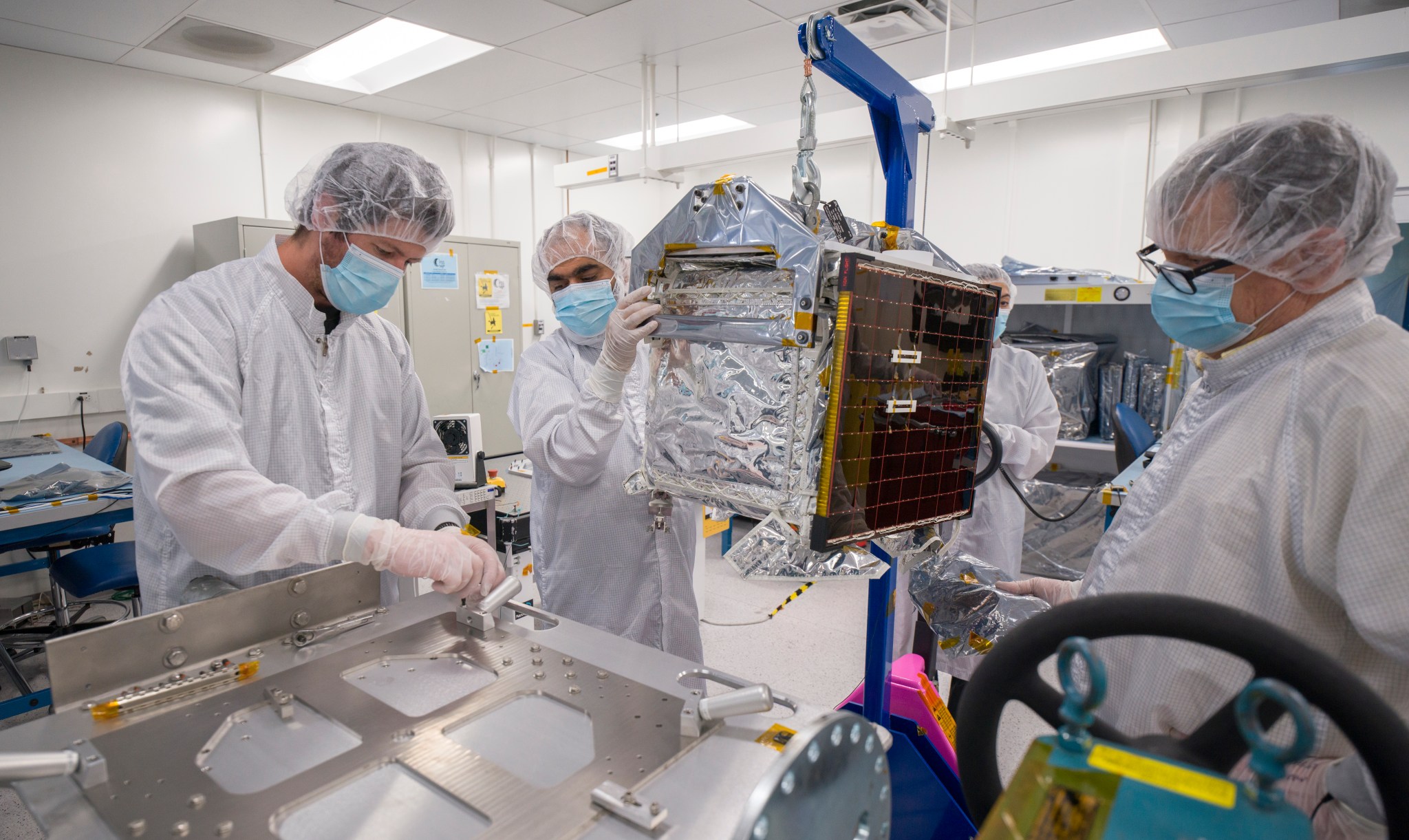
Part of a payload called Farside Seismic Suite (FSS) that was recently assembled at NASA’s Jet Propulsion Laboratory, the two seismometers are expected to arrive in 2026 at Schrödinger basin, a wide impact crater about 300 miles from the Moon’s South Pole. The self-sufficient, solar-powered suite has its own computer and communications equipment, plus the ability to protect itself from the extreme heat of lunar daytime and the frigid conditions of night.
After being delivered to the surface by a lunar lander under NASA’s CLPS (Commercial Lunar Payload Services) initiative, the suite will return the agency’s first seismic data from the Moon since the last Apollo program seismometers were in operation nearly 50 years ago. Not only that, but it will also provide the first-ever seismic measurements from the Moon’s far side.
Up to 30 times more sensitive than its Apollo predecessors, the suite will record the Moon’s seismic “background” vibration, which is driven by micrometeorites the size of small pebbles that pelt the surface. This will help NASA better understand the current impact environment as the agency prepares to send Artemis astronauts to explore the lunar surface.
Planetary scientists are eager to see what FSS tells them about the Moon’s internal activity and structure. What they learn will offer insights into how the Moon – as well as rocky planets like Mars and Earth – formed and evolved.
It will also answer a lingering question about moonquakes: Why did the Apollo instruments on the lunar near side detect little far-side seismic activity? One possible explanation is that something in the Moon’s deep structure essentially absorbs far-side quakes, making them harder for Apollo’s seismometers to have sensed. Another is that there are fewer quakes on the far side, which on the surface looks very different from the side that faces Earth.
“FSS will offer answers to questions we’ve been asking about the Moon for decades,” said Mark Panning, the FSS principal investigator at JPL and project scientist for InSight. “We cannot wait to start getting this data back.”
Farside Seismic Suite’s two complementary instruments were adapted from InSight designs to perform in lunar gravity – less than half that of Mars, which, in turn, is about a third of Earth’s. They’re packaged together with a battery, the computer, and electronics inside a cube structure that’s surrounded by insulation and an outer protective cube. Perched atop the lander, the suite will gather data continuously for at least 4½ months, operating through the long, cold lunar nights.
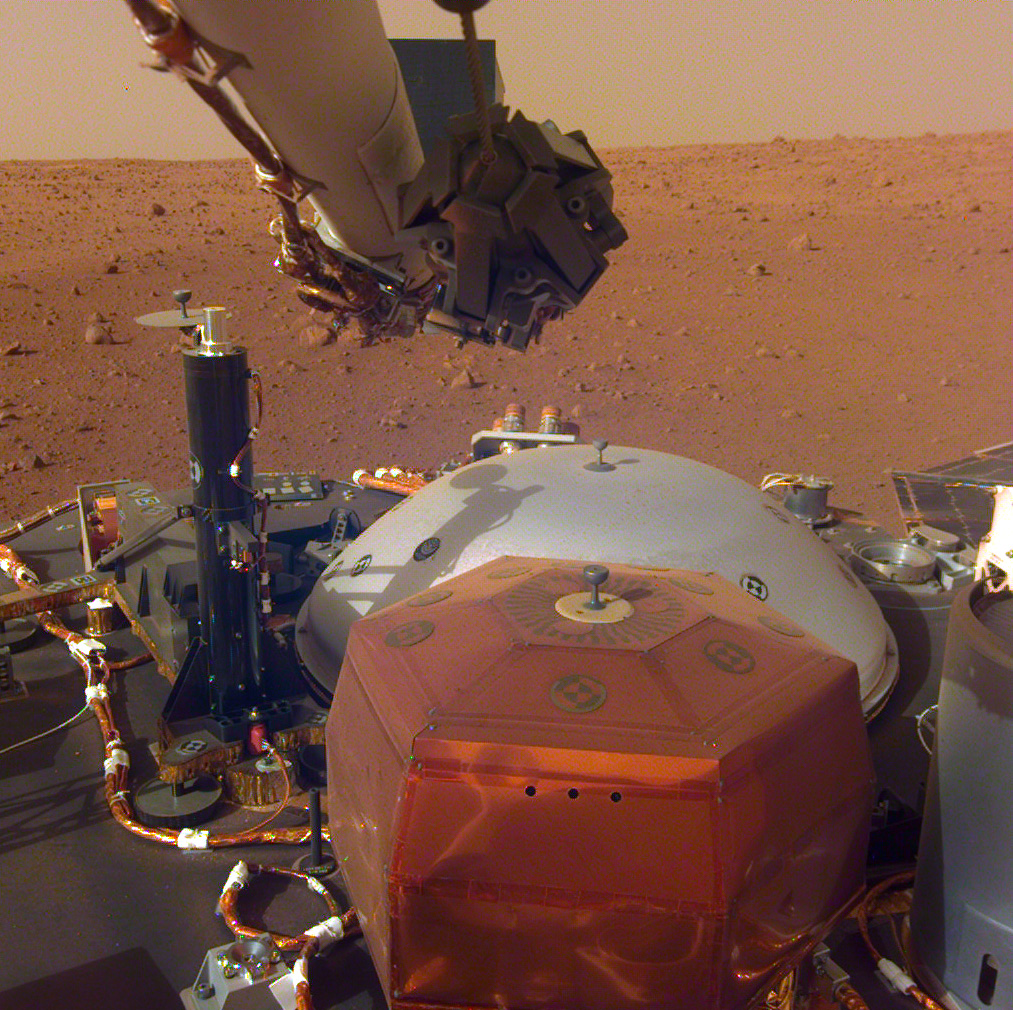
The Very Broadband seismometer, or VBB, is the most sensitive seismometer ever built for use in space exploration: It can detect ground motions smaller than the size of a single hydrogen atom. A fat cylinder about 5 inches in diameter, it measures up-and-down movement using a pendulum held in place by a spring. It was originally constructed as an emergency replacement instrument (a “flight spare”) for InSight by the French space agency, CNES (Centre National d’Études Spatiales).
Philippe Lognonné of Institut de Physique du Globe de Paris, the principal investigator for InSight’s seismometer, is an FSS co-investigator and VBB instrument lead. “We learned so much about Mars from this instrument, and now we are thrilled with the opportunity to turn that experience toward the mysteries of the Moon,” he said.
The suite’s smaller seismometer, called the Short Period sensor, or SP, was built by Kinemetrics in Pasadena, California, in collaboration with the University of Oxford and Imperial College, London. The puck-shaped device measures motion in three directions using sensors etched into a trio of square silicon chips each about 1 inch wide.
The FSS payload came together at JPL over the last year. In recent weeks, it survived rigorous environmental testing in vacuum and extreme temperatures that simulate space, along with severe shaking that mimics the rocket’s motion during launch.
“The JPL team has been excited from the beginning that we’re going to the Moon with our French colleagues,” said JPL’s Ed Miller, FSS project manager and, like Panning and Lognonné, a veteran of the InSight mission. “We went to Mars together, and now we’ll be able to look up at the Moon and know we built something up there. It’ll make us so proud.”
A division of Caltech in Pasadena, California, JPL manages, designed, assembled, and tested Farside Seismic Suite. The French space agency, CNES (Centre National d’Études Spatiales), and IPGP (Institut de Physique du Globe de Paris) provided the suite’s Very Broadband seismometer with support from Université Paris Cité and the CNRS (Centre National de la Recherche Scientifique). Imperial College, London and the University of Oxford collaborated to provide the Short Period sensor, managed by Kinemetrics in Pasadena. The University of Michigan provided the flight computer, power electronics, and associated software.
A selection of NASA’s PRISM (Payloads and Research Investigations on the Surface of the Moon), FSS is funded by the Exploration Science Strategy and Integration Office within the agency’s Science Mission Directorate. The Planetary Missions Program Office at NASA’s Marshall Space Flight Center provides program management. FSS will land on the Moon as part of an upcoming lunar delivery under NASA’s CLPS (Commercial Lunar Payload Services) initiative.
NASA Astronauts Practice Next Giant Leap for Artemis
The physics remain the same, but the rockets, spacecraft, landers, and spacesuits are new as NASA and its industry partners prepare for Artemis astronauts to walk on the Moon for the first time since 1972.
NASA astronaut Doug “Wheels” Wheelock and Axiom Space astronaut Peggy Whitson put on spacesuits, developed by Axiom Space, to interact with and evaluate full-scale developmental hardware of SpaceX’s Starship HLS (Human Landing System) that will be used for landing humans on the Moon under Artemis. The test, conducted April 30, marked the first time astronauts in pressurized spacesuits interacted with a test version of Starship HLS hardware.
“With Artemis, NASA is going to the Moon in a whole new way, with international partners and industry partners like Axiom Space and SpaceX. These partners are contributing their expertise and providing integral parts of the deep space architecture that they develop with NASA’s insight and oversight,” said Amit Kshatriya, NASA’s Moon to Mars program manager. “Integrated tests like this one, with key programs and partners working together, are crucial to ensure systems operate smoothly and are safe and effective for astronauts before they take the next steps on the Moon.”
The day-long test, conducted at SpaceX headquarters in Hawthorne, California, provided NASA and its partners with valuable feedback on the layout, physical design, mechanical assemblies, and clearances inside the Starship HLS, as well as the flexibility and agility of the suits, known as the AxEMU (Axiom Extravehicular Mobility Unit).
To begin the test, Wheelock and Whitson put on the spacesuits in the full-scale airlock that sits on Starship’s airlock deck. Suits were then pressurized using a system immediately outside the HLS airlock that provided air, electrical power, cooling, and communications to the astronauts. Each AxEMU also included a full-scale model of the Portable Life Support System, or “backpack,” on the back of the suits. For Artemis moonwalks, each crew member will put on a spacesuit with minimal assistance, so the team was eager to evaluate how easily the suits can be put on, taken off, and stowed in the airlock.
During the test, NASA and SpaceX engineers were also able to evaluate placement of mobility aids, such as handrails, for traversing the hatch. Another set of mobility aids, straps hanging from the ceiling in the airlock, assisted the astronauts when entering and removing the AxEMU suits. The astronauts also practiced interacting with a control panel in the airlock, ensuring controls could be reached and activated while the astronauts were wearing gloves.
“Overall, I was pleased with the astronauts’ operation of the control panel and with their ability to perform the difficult tasks they will have to do before stepping onto the Moon,” said Logan Kennedy, lead for surface activities in NASA’s HLS Program. “The test also confirmed that the amount of space available in the airlock, on the deck, and in the elevator, are sufficient for the work our astronauts plan to do.”
The suited astronauts also walked the from Starship’s airlock deck to the elevator built for testing. During Artemis missions, the elevator will take NASA astronauts and their equipment from the deck to the lunar surface for a moonwalk and then back again. Whitson and Wheelock practiced opening a gate to enter the elevator while evaluating the dexterity of the AxEMU suit gloves, and practiced lowering the ramp that astronauts will use to take the next steps on the Moon.
The steps the astronauts took in the spacesuits through full-scale builds of the Starship hatch, airlock, airlock deck, and elevator may have been small, but they marked an important step toward preparing for a new generation of moonwalks as part of Artemis.
For the Artemis III mission, SpaceX will provide the Starship HLS that will dock with Orion in lunar orbit and take two astronauts to and from the surface of the Moon. Axiom Space is providing a new generation of spacesuits for moonwalks that are designed to fit a wider range of astronauts.
With Artemis, NASA will explore more of the Moon than ever before, learn how to live and work away from home, and prepare for future human exploration of the Red Planet. NASA’s SLS (Space Launch System) rocket, exploration ground systems, and Orion spacecraft, along with the human landing system, next-generation spacesuits, Gateway lunar space station, and future rovers are NASA’s foundation for deep space exploration.
Learn more about Artemis.
What's Your Reaction?































